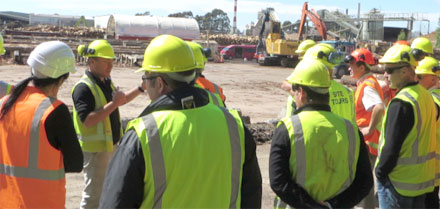
Death and injury are not usually high on the list of concerns for the average office worker. But for those working in agriculture, forestry and fishing, perhaps they should be. Source: Sydney Morning Herald
An analysis of the most recent data set from Safe Work Australia found the agriculture, forestry and fishing industry recorded the highest number of injuries and fatalities from 2003 to 2014, with the 686 deaths recorded accounting for 22% of total workplace deaths in the period.
In 2013-14 the combined industry recorded the third-highest number of worker’s compensation claims, referring to 8.6 million hours worked.
“It’s no surprise, given commercial fishing is deemed as the most dangerous job on the planet,” said Michelle Hutchison, money expert at comparison website finder.com.au, who compared the Safe Work Australia data.
Transport, postal and warehousing was not far behind, with 549 transport-related deaths in workplaces.
These industries and those of agriculture forestry and fishing all involve some form of driving of vehicle interaction, accounting for the high number fatalities.
Vehicle-related incidents remain the biggest killer in Australian workplace incidents, with road freight transport alone killing 423 workers in the 2003-2014 period.
The construction industry came in third on the list of most dangerous jobs, followed by manufacturing, mining, arts and recreation services, wholesale trade, health and community services, public administration and safety, and finally, administrative and support services.
Despite coming in eighth in terms of its risk level, health and community services recorded the highest number of serious injuries claims in 2013- 14, totalling 17,415. In ranking Australia’s most dangerous jobs, finder.com.au used the most recently released figures from Safe Work Australia.
“It was based on a weighting of 100:1 fatalities to injuries, with the number of deaths per 1000 workers and the number of serious injuries per 100,000 workers,” Ms Hutchison said.
Statistics on work-related fatalities are published regularly in the Work-Related Traumatic Injury Fatalities report.
A spokesperson for Safe Work Australia said the statistics in the report show that the rate and number of work-related fatalities is declining.
“Between 2003 and 2014, the rate of work-related injury fatalities fell by 41% from 2.75 fatalities per 100 000 workers in 2003 to 1.61 in 2014,” she said.
“Over the same period, the number of worker fatalities fell by 27% from 259 to 188.”
Safe Work Australia said it is difficult to compare Australia’s work place fatalities to other countries, due to differences in the scope and methodology used by countries to collect fatality data.
Areas of difference include the coverage of self-employed workers, the lack of data relating to road traffic fatalities and the incomplete coverage within the data of the working population.”





